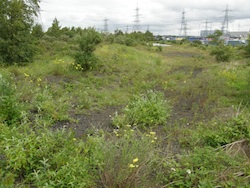 At a time when we’re still in the middle of a housing crisis and there aren’t enough homes to meet our growing and ageing population, building on brownfield might appear to be a sensible solution.
At a time when we’re still in the middle of a housing crisis and there aren’t enough homes to meet our growing and ageing population, building on brownfield might appear to be a sensible solution.
The political parties are renewing their focus on brownfield, looking at ways to unlock it for the delivery of new homes, while also promising yet more changes to the National Planning Policy Framework to strengthen the ‘brownfield first’ policy, and ‘identify brownfield zones’ for development.
It’s important to recognise there are many brownfield areas that could help accommodate the UK’s housing needs. The majority have low value for society and are suitable for development. So, why wouldn’t we want to use these derelict areas for new homes?
That’s certainly the view of the Campaign to Protect Rural England (CPRE), which is running a campaign to identify brownfield spaces for potential development to push the ‘brownfield first’ approach.
In principle, this is a great idea. But is it that simple? Can we just go ahead and build homes on all derelict land? Surely, if it is ‘derelict’, it was used for a purpose at one stage. So, why not now? What’s stopping us?
Well, firstly, many brownfield sites have high remediation costs that can make a development commercially unviable. Secondly, development needs to be located on the most appropriate land where there is demand. Brownfield land is often in old industrial areas, which is not necessarily the right location for new homes and communities. Thirdly, what about land for future industry or commerce – where will we accommodate this need if all brownfield land is used for housing?
The Town and Country Planning Association (TCPA) predicts that from 2011 – 2031, up to 245,000 new homes a year are required to meet demand. Savills indicates we are falling short – we are currently likely to have around 130,000 new homes in England this year. Put quite simply, there isn’t enough brownfield land to accommodate this need and, what little there is, is not necessarily in the right location or commercially viable.
According to the National Land Use Database (NLUD), about 55,000 hectares of brownfield land is available in England. Having worked in this industry for over 30 years, my personal opinion is that only 10,000 to 15,000 hectares of this land is truly available for development - much of the land in the NLUD is still in use. Government guidelines suggest development of 40 houses per hectare, which only equates to 400,000 to 600,000 homes on this available land. So, at best, this will only serve two to two and a half years’ worth of homes. This means that both brownfield and greenfield land will have to be taken into account.
My concerns go deeper. We must understand there are many other benefits of brownfield land. Many sites have extremely high environmental and societal values, which need to be taken into account.
Brownfield areas can be ideal for providing existing communities in densely urban areas with access to green open space. As we’ve outlined in our ten-year strategy, we believe everyone, not just rural communities, should have access to green space close to where they live and work.
Research has proven people need access to green space for a multitude of reasons. Public Health England’s recent report identifies the benefits of green space on both mental and physical health. Green spaces also encourage social cohesion, provide educational opportunities and are free local amenities for families, which would otherwise not exist. Green public open space can often provide communities with the only opportunity to engage with nature and the outdoors in urban areas. In turn this can have significant benefits to the UK economy, such as savings to the NHS and from reduced anti-social behaviour. Without open spaces in our inner cities, people will be driven to the outskirts of towns/cities for recreation, thereby increasing pressure on the countryside and contributing to climate change!
As the need to adapt to climate change grows; brownfield sites in inner cities and towns have substantial value as soakaways, for flood prevention, counteracting heat islands and reducing pollution.
By layering land with more and more development, without allowing for vital green infrastructure, we’re severely reducing our ability to deal with the increasing extreme climates we’ve already witnessed, from flash flooding to heat waves.
As we’ve learnt from working closely with Buglife, brownfield sites can be wildlife havens, which provide habitats for many important pollinators. Since the end of World War Two, 97 per cent of our wildflower meadows have been lost, leaving important species such as bees in trouble. What’s also concerning is that the UK’s Biodiversity 2020 targets to protect wildlife-rich brownfield sites are not being taken into account by all three main political parties.
Take Oliver Road Lagoons, for example, our brownfield site along the Thames Estuary. This is a prime example of a brownfield site that’s of national environmental importance as a Site of Special Scientific Interest (SSSI). By working closely with commercial developer, Goodman and Buglife, we have secured and improved this wildflower-rich habitat, which supports over 1,300 wildlife species.
This may not seem important in the middle of a housing crisis, but this space supports wildlife that’s crucial to our existence, playing vital roles, such as pollinating our food, and as such, we need to ensure they also have space to survive and thrive.
Taking on board these benefits, brownfield should not necessarily be the first port of call for new developments. It’s essential that the National Planning Policy Framework only prioritises brownfield if it is ‘not of high environmental value’ and Local Planning Authorities need to support existing as well as future communities in urban areas when making decisions.
We know that to meet the housing needs, we will need to look at all types of land. It’s simply not a case of brownfield versus greenfield. We need to move beyond this polarized debate, which is just masking the issue.
So, what’s the solution? I believe we need to have a Royal Commission on Land Use in England. This would start by analysing the existing demand for land – not just for housing but for industry, commerce, agricultural and recreational use. Only then can we have a proper debate about how this land will be provided. The Commission would bring together experts from the different fields of land use and in collaboration, develop a land use strategy for England, which would become part of the Local Authority’s responsibility as they develop their Local Development Plans.
This would then enable us to act together, to create places where people want to live and work, with sustainable, high quality green spaces that improve people’s health and wellbeing and deliver environmental, social and economic benefits.
About the author
 Euan Hall is a Chartered Surveyor with over 25 years’ experience in Economic Development and Regeneration and has been Chief Executive of The Land Trust since its launch in 2004.
Euan Hall is a Chartered Surveyor with over 25 years’ experience in Economic Development and Regeneration and has been Chief Executive of The Land Trust since its launch in 2004.
Have you any commercial property events you'd like to tell us about? It could be networking, exhibitions, seminars, industry lunches or sporting fixtures. We will list them for free. Just email newsdesk@propnews.co.uk with the following details: Event name, date, time, venue, cost, booking info and a brief description of the event.
To list your property job vacancies on Property News. Email: richenda@propnews.co.uk.